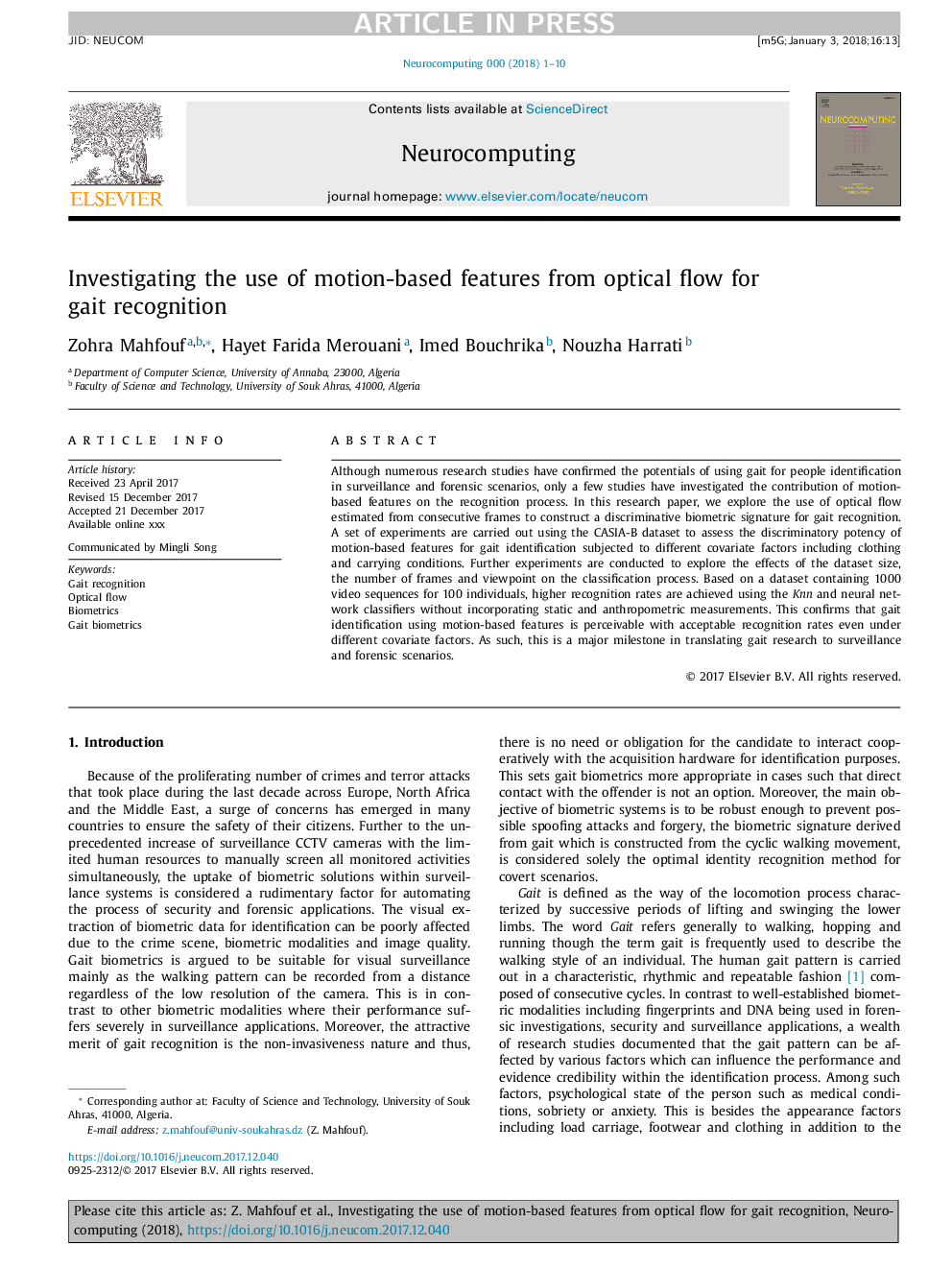| Article ID | Journal | Published Year | Pages | File Type |
|---|---|---|---|---|
| 6864546 | Neurocomputing | 2018 | 10 Pages |
Abstract
Although numerous research studies have confirmed the potentials of using gait for people identification in surveillance and forensic scenarios, only a few studies have investigated the contribution of motion-based features on the recognition process. In this research paper, we explore the use of optical flow estimated from consecutive frames to construct a discriminative biometric signature for gait recognition. A set of experiments are carried out using the CASIA-B dataset to assess the discriminatory potency of motion-based features for gait identification subjected to different covariate factors including clothing and carrying conditions. Further experiments are conducted to explore the effects of the dataset size, the number of frames and viewpoint on the classification process. Based on a dataset containing 1000 video sequences for 100 individuals, higher recognition rates are achieved using the Knn and neural network classifiers without incorporating static and anthropometric measurements. This confirms that gait identification using motion-based features is perceivable with acceptable recognition rates even under different covariate factors. As such, this is a major milestone in translating gait research to surveillance and forensic scenarios.
Related Topics
Physical Sciences and Engineering
Computer Science
Artificial Intelligence
Authors
Zohra Mahfouf, Hayet Farida Merouani, Imed Bouchrika, Nouzha Harrati,
